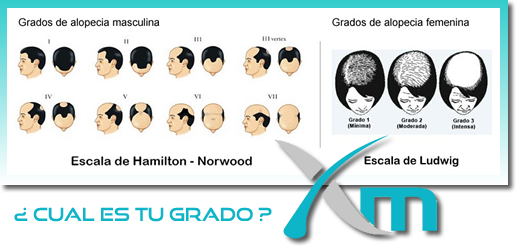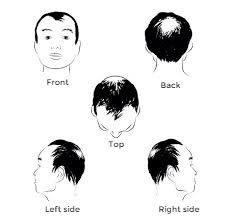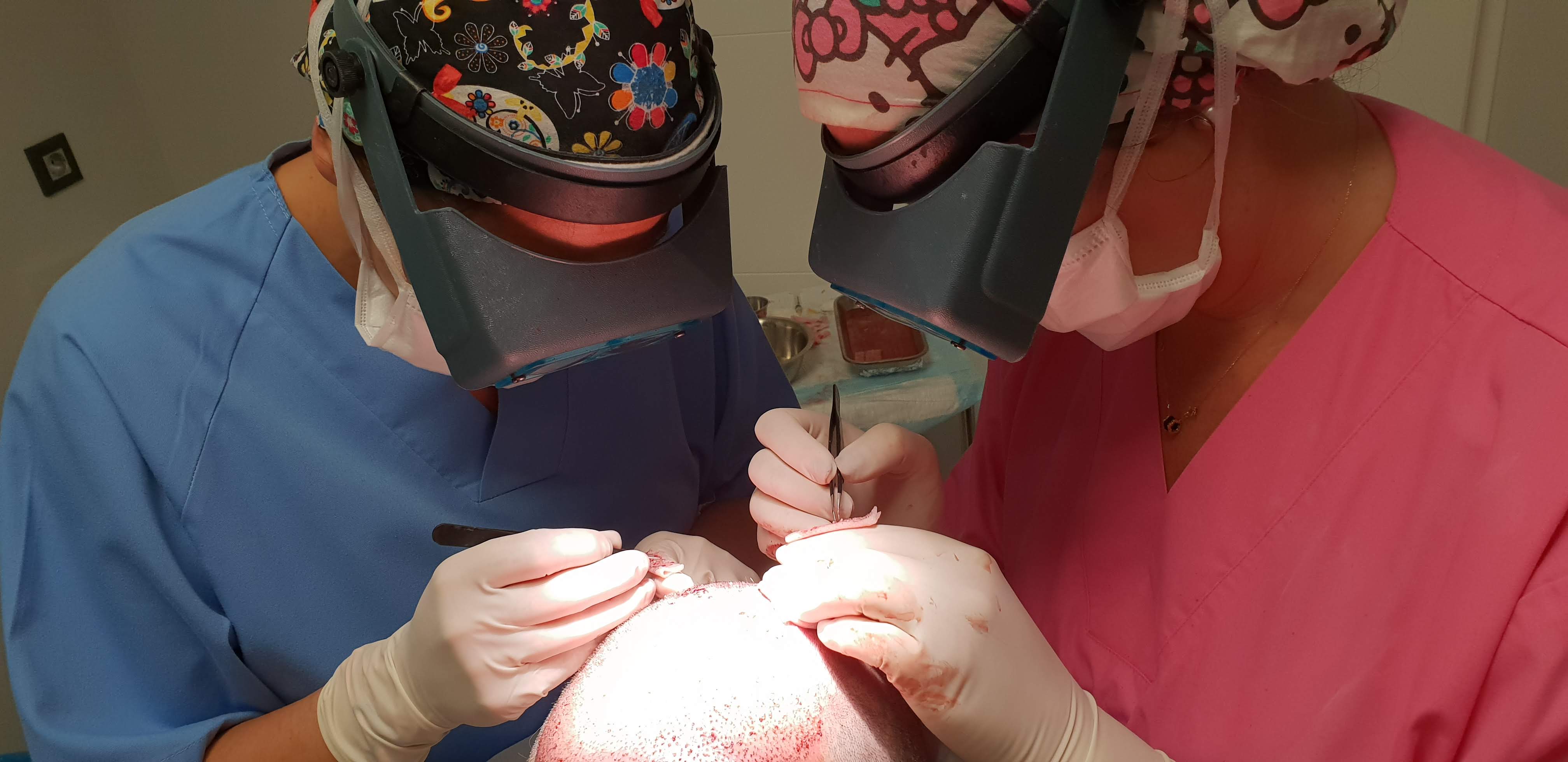
HAIR TRANSPLANT
The FUE method (acronym for Follicular Unit Extraction) consists of a slightly invasive transplant method that is performed through the extraction of hair follicles and then grafted onto those areas without hair. It is one of the world’s best known hair grafting procedures.
FUE hair transplantation is an extremely successful procedure that gives a completely natural result. With proper planning, up to 2.500 grafts can be transplanted in one session, and with the correct technique, the percentage of survival of grafts is from 90 to 100%.It is very important that the procedure is done skillfully so that the success of the intervention is satisfactory. It is mandatory for a patient to make an intervention plan, to understand his wishes well and to explain what is possible to fulfill, and which may not.
Hair transplantation is done under local anesthesia and there are no pains in the intervention, and the pain after the intervention is minimal, if at all. In order to make the result as good as possible, it is important to follow the instructions the doctor gives to each patient, as well as to use the special medication in days after intervention.
It is a sutureless method of hair restoration in which hair follicles are extracted from the back of head under local anaesthesia with the help of special micropunches and implanted in the bald area.
On the day of surgery, the entire donor area from the back of the head is trimmed to 1–2 mm length.
The grafts are then extracted from the donor area with the help of 0.8 and 1 mm special micropunches.The added advantage is the resulting undetectable micro-scars. The extracted graft may consist of 1 to 4 or rarely even 5 or 6 hairs
Follicular Unit Grafts are placed in the tiny incisions that are made in an irregular pattern in the recipient area.


Would you like more information about your alopecia?
Visit us with a no obligation consultation. Our experts in Hair Transplantation will evaluate your case and advise you, we will propose the best solution to your problem.
.
.

REGAIN YOUR HAIR WITH ALL GUARANTEES
WITHOUT LEAVING SPAIN
Initial consultation without cost or obligation
Bilingual attention in Spanish and English
Personalized diagnosis and advice
Personalized surgical planning
One week postoperative medication and care products kit
PRP
Personalized follow-up during the first year
WOULD YOU LIKE TO HAVE A HAIR ASSESSMENT?
Please upload 5 photographs of the front, back, top and side (both sides) of the head, as shown in the example image. We ask you to please be of a good quality, with enough light and without using front camera or selfie. We commit to respond with a personalized diagnosis and assessment.

What is the duration of a hair transplant procedure?
Each session lasts approximately between 7 and 8 hours, always depending on the number of follicular units that are required to be extracted and implanted. It is possible that a person with advanced degree of alopecia or who wants to further improve the results of the first surgery may require more than one session.
wil I feel pain during the surgery? What kind of anesthesia is used?
Hair implant procedure is a minimally invasive technique, and it does not hurt. Local anesthesia is used for both the donor and recipient areas. Some patients feel a slight discomfort during the hair surgery, with the sensation of supporting a slight pull or pressure in the treated area. But it is a very mild and perfectly tolerable annoyance. The only pain that can be experienced will occur when local anesthesia is injected into the areas to be treated. Once the scalp is anesthetized, the pain disappears completely.
Throughout the intervention, the patient is conscious, and if nervous or anxious, a minimum amount of sedation can be administered to relax.
How long is the postoperative period? When can I return to normal life?
The immediate postoperative period lasts approximately 3 days, which are the most delicate for a good result of the transplant. However, you can make a practically normal life from the day after the transplant, avoiding excessive efforts and respecting the care prescribed by your surgeon.
May swelling occur after the surgery ?
Yes, and it is normal. It is possible that after the second day of the procedure there is a slight edema or swelling and, consequently, affects the face, especially the forehead and eyelids. This is due to the fact that during surgery there is an infiltration of physiological saline used with anesthesia. This will disappear within a few days if you follow up the recommendations prescribed by your surgeon.
Will the results be permanent?
The hair follicles that are transplanted are genetically-resistant against baldness so they will, in theory, continue to grow over your lifetime. However, if the patient has a good donor area and has followed medical treatment before and after surgery, transplanted hair grafts should not fall.
